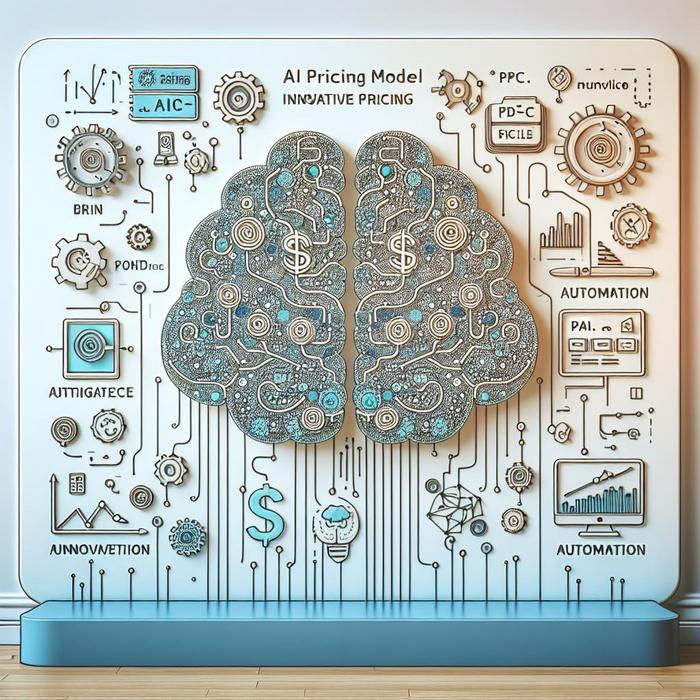A Shift in Finding Success: Comparison of Google, Meta, and TikTok’s Ad Strategies
In today’s digital age, reaching the right consumer with the right message at the right time is no longer just a marketing mantra. It has become an operational imperative. For C-level executives in top-tier companies, effective ad placement and campaign implementation are keys to driving engagement and ultimately, business growth.
Google and Conversion-driven Ad Placement
In the realm of digital advertising, Google reigns supreme with its pioneering approach to ad placement. Its strategy is grounded in the principle of maximizing the total value of conversions – a strategy that prioritizes both quantity and quality of conversions. But how exactly does Google go about this?
They employ strategic bidding methods. Max conversion value and target ROAS (tROAS) are the key pillars of their approach. Leveraging machine learning, they predict the likelihood of conversions that carry different values. This helps optimize for conversions that are likely to generate the most revenue. The result? Increased return on advertising spend (ROAS) for businesses.
One can find more about Google’s strategic bidding methods here.
TikTok’s Radical Approach to Customer Engagement
TikTok, the global sensation in social media, has brought a new dimension to online advertising. TikTok’s ad strategy emphasizes the entertainment factor. Ads on TikTok are not only about showcasing products or services but are crafted to engage and delight their audience. This is achieved through the platform’s unique blend of personalization algorithms and content-driven ads.
Unlike traditional advertising, where ad placement is a mere tactical move, TikTok transformed it into a strategic initiative that drives both brand awareness and customer engagement. TikTok’s success lies in its ability to seamlessly integrate ads within the user experience, making it less intrusive and more engaging.
Meta: Personalizing Ads for Better Returns
Meta, formerly known as Facebook, is another giant in online advertising. Similar to Google, Meta also focuses on value, but their approach is subtly different. Instead of focusing on conversion values alone, Meta emphasizes personalization. By leveraging user data, Meta creates hyper-targeted ads that appeal to individual user preferences.
Effective personalization has been shown to amplify the value of conversions significantly. According to a study by McKinsey, personalization efforts can reduce acquisition costs by as much as 50%, lift revenues by 5-15%, and increase the efficiency of marketing spend by 10-30%.
More about implementing personalization in ad campaigns can be found here.
Choosing the Right Platform: Google Vs. TikTok Vs. Meta
When it comes to choosing the right platform for their campaigns, top-level management must consider several factors. These include their target audience, the industry they’re in, their brand messaging, and of course, the nature of their product or service.
Need a deep dive into strategic ad placement? Discover more about mastering this art here.
The Future of Value-based Optimization
While every platform has its unique strengths, the future of online advertising lies in optimizing for value. The quest for value goes beyond getting conversions. It involves understanding the customer’s journey, their preferences, and engaging them in meaningful ways. It is about creating resonance with the customer and making every interaction count.
Strategies such as personalized messaging, seamless ad integration, and strategically optimizing for high-value conversions are vital in this digital era. Ultimately, value-based optimization is all about achieving the highest possible ROI from ad campaigns while simultaneously elevating the customer experience.
Unlock the potential of value-based optimization with AI-driven campaign insights here.
Google, Meta, and TikTok – A Comparative Analysis of Strategic Ad Execution
The ability of each platform to implement dynamic variability for brands is decisive in choosing the ideal channel for advertising. This denotes an approach that blends conversion-focused placement, entertainment value, and highly personalized, targeted messaging. Differently, each platform brings its unique flavor.
For businesses leaning towards a robust and comprehensive digital presence through ads, Google provides the ideal ground. Its emphasis on maximized conversion value allows brands to reach a vast network. This delves deeper into Google ad placement strategies.
However, businesses aiming for more viral outreach could gravitate towards TikTok – the bedrock for interactive and content-driven ads. TikTok proves ad implementation can be both strategic and entertaining. For a more extensive look at how TikTok revolutionizes customer engagement, visit.
Lastly, Meta offers a subtle but potent angle by focusing on hyper-personalization. This approach increases the chances of click-through and significantly escalates the value of conversions. However, as alluring as this sounds, it’s indispensable for executives to consider the implications on data privacy and navigate this terrain wisely.
Transforming Advertisements from Transactional to Transformational
Evolving from transactional to transformational, leaders are recognizing the significant role of maximizing value in advertising. This broader viewpoint sees more than mere numbers. It underscores the importance of resonating with the audiences, strategizing ad implementation, and creating a memorable customer experience for individuals.
Moving past traditional approaches, integrating AI-driven analysis and insights allows for real-time optimization of ad performance, thereby ensuring the highest possible ROI. Discover how to leverage AI-integration in ad campaigns here.
Maintaining Relevance in the Changing Landscape of Digital Advertising
In the shifting sands of online advertising, the businesses which adapt to market demands and transform digitally are the ones that thrive. Brands need to continually stay relevant by tracking current trends and making apt choices in strategic ad implementation.
For example, voice search capabilities and the rise in programmatic advertising are significantly impacting the advertising landscape. Understanding these demands and adapting the advertising strategy accordingly will help in maintaining the competitive edge. Learn more about emerging trends here.
Orienting towards a Customer-Centric Approach
As businesses strive to create a long-lasting impression on their customers, the focus shifts towards a more customer-centric approach. This shift prioritizes creating value for the customer through personalized content and seamless ad integration.
It’s no surprise, then, that companies like Google, Meta, and TikTok are increasingly investing in technology to enhance customer experience and deliver relevant and personalized advertising. Executives must, therefore, prioritize investing in technology and data analytics to craft ad campaigns that resonate with their audience and foster brand loyalty.
Discover more about customer-centric approaches here.
Proactive Transformation: Leveraging Data for Strategic Decision-Making
In the rapidly changing digital marketplace, proactive transformation is the order of the day. Organizations that harness and leverage customer data to make strategic decisions will lead the road to innovation and success.
With the increasing quantum of data, new avenues for exploration and optimization are opening up. Advanced machine learning algorithms are aiding in making sense of vast data sets, helping organizations make informed, strategic decisions around ad placement and campaign implementation.
To learn more about leveraging data for strategic decision-making, explore this.
Transitioning from Campaign Management to Value-based Optimization
The future of successful digital advertising lies in transitioning to a model of strategic, value-based optimization. This shift fosters a profound understanding of customer interaction and engagement, prioritizing resonance and relevance over mere reach and frequency.
Value-based optimization transcends traditional campaign management, placing the focus on the entire customer journey. It ensures each interaction adds value, culminating in a positive customer experience and increased return on investment from ad campaigns.
To dive deeper into this concept, you might want to explore this comprehensive guide to elevating business results using AI-driven campaign insights.
The Strategic Imperative of Advanced Ad Analytics
The practice of value-based optimization not only enhances the effectiveness of ad campaigns but also drives higher-level business outcomes. From understanding the life cycle of the customer to personalized ad targeting, the benefits are far-reaching.
More than just about clicks and conversions, the power of advanced ad analytics lies in unlocking strategic insights that guide critical business decisions. It offers compelling ways to understand customer behavior, identify market opportunities, and optimize advertising strategy in real-time.
To discover the strategic potential of advanced ad analytics, click here.
In conclusion, the parallel trajectories of digital advertising advancements and the increasing urge for value optimization are heralding the next era of marketing. The challenge for executives is to leverage these trends to create ad strategies that drive business growth and deliver exceptional customer experiences.











